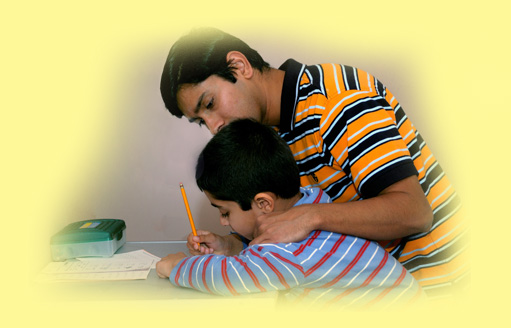- Establish a solid rapport with families from the outset, so that there is a strong level of trust between families and the service providers.
- Invite participation and involvement from all members of an extended family, including grand-parents, aunts and uncles, etc.
- Show respect for the family's culture at all times. Staff in daycares or kindergarten classrooms can post pictures or display items representing different cultures. In this way, families may feel more welcomed upon entry into this setting.
- Use translators or multilingual staff for meetings or conferences with the family. If possible, have important resources translated into the family's home language.
- Try to learn a few words in the language spoken by the family to help make a connection with them. For professionals working in daycare centres or kindergarten classrooms, teach the children in your classroom a few words in the family's home language.
- When possible, ask parents to explain cultural practices that are observed and that may not be understood.
- Respect differences in personal interactions or body language (e.g., lack of eye contact is a sign of respect in certain cultures).
- If possible, enrol staff in cultural sensitivity training sessions.
|


 A child who exhibits good self-regulation, receives praise more often, enjoys school more and puts more effort into her school work. At the same time, a child with poor self-regulation finds it more difficult to pay attention in school, has difficulty meeting demands and expectations, has less fun in school and puts less effort into her work. Over time, teachers expect less self-control and poorer work habits. Finally, the child sees herself as a poor student, holds a negative view of herself and has less self-confidence and lower self-esteem. These children may only exhibit a small difference in learning readiness in the early years, but through a positive or negative feedback loop, the gap widens and their trajectories can be expected to diverge more and more each year (Blair and Diamond, 2008; Thompson, 2009).
A child who exhibits good self-regulation, receives praise more often, enjoys school more and puts more effort into her school work. At the same time, a child with poor self-regulation finds it more difficult to pay attention in school, has difficulty meeting demands and expectations, has less fun in school and puts less effort into her work. Over time, teachers expect less self-control and poorer work habits. Finally, the child sees herself as a poor student, holds a negative view of herself and has less self-confidence and lower self-esteem. These children may only exhibit a small difference in learning readiness in the early years, but through a positive or negative feedback loop, the gap widens and their trajectories can be expected to diverge more and more each year (Blair and Diamond, 2008; Thompson, 2009). 
